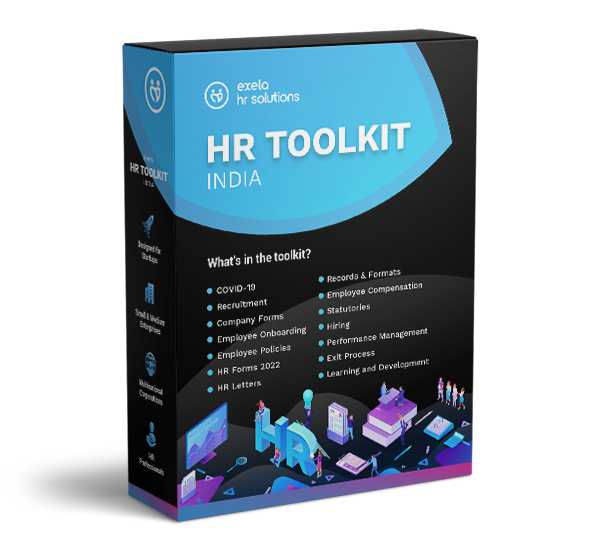
In today's fast-paced business world, HR professionals make strategic decisions about the company's success and future growth - knowing what's working best for the company and where to infuse future efforts. However, it’s not the HR professionals alone – they always work with other departments, and the collaboration goes both ways.
88% of CFOs reported collaborating with HRs weekly, biweekly, or monthly.
While 57% of CFOs stated they coordinate with their HR counterparts to streamline processes efficiently.
The collaboration makes sense as CHROs and CFOs share several business objectives. These two functionalities work together across several verticals, including business and growth strategy, benefits and rewards, and compensation management. Employee data supports this collaboration by providing facts and figures, assisting HR to have a better understanding of the problem areas before they cost the company talent or money. However, collecting this data can be more challenging than it seems.
According to research, only 3% of surveyed 6,300 executives said they had the data to make sound people decisions.
If you are also amongst those not having sophisticated HR technology or HR data analysts, you can still measure key performance indicators (KPIs) or metrics to assess data and make more informed data-driven decisions. Dive in below to learn 10 critical HR metrics in 2023.
10 Critical HR metrics in 2023
HR metrics demonstrate the values that specify the effectiveness of your human resource initiatives. Once you have set critical goals for your HR needs, you can use HR metrics to take a data-driven approach to assess and track the challenges and progress. Here are 10 crucial HR metrics you must measure in 2023.
-
Cost per Hire (CPH)
This old-school HR metric is still the same and relevant in 2023. CPH (Cost per Hire) demonstrates the average spending on acquiring a new employee. As with any per capita figure or any value per person, a value can be determined by simply dividing costs by the number of persons in question. For CPH, divide the total hiring money by the total new hires within a specific period.
HR departments worldwide have long relied on the CPH as one way to gauge the hiring process's efficiency. One reason is that the process is more descriptive than just adding up expenses. Moreover, the metric incorporates the costs incurred by outreach to all potential employees. This may seem counterintuitive, but it's less variable and more illuminating in cost-effectiveness. In addition, more practical to calculate.
-
Time to Hire
This is another essential HR metric that measures the time required to engage a potential employee in the recruiting process to accept the position. Similar to CPH, time to hire is expressed as a per-person average and used to evaluate the efficiency of the talent acquisition process. If you are encountering a lengthy time to hire, it is a signal of poor reach or the underperformance of the hiring teams. Unfortunately, many HR professionals need more consistency in defining the start of the time-to-hire period. The time to hire differs from the time to fill - it begins when an organization makes an initial job request and ends when a candidate accepts the position.
Also Read: 4 HR Trends Revitalizing HR Operations in 2023
-
Quality of Hire
Quality of hire is a super-metric exhibiting different employee metrics (often called indicators). The selection of these indicators varies according to the different goals involved. For instance, while the cost per hire and time to hire focus on the efficiency of the recruiting process, the quality of the hire tries to exhibit the value an employee brings to a company. You can calculate the quality of hire by simply adding the values from whichever employee indicators are being used and dividing the result by the total number of indicators being used.
-
Employee Net Promoter Score (eNPS)
Employee net promoter score (eNPS) shows how likely a group of employees would recommend employment with your company to others. It is relatively easy to measure and indicates reasonable overall employee satisfaction. Employers can carry out a survey asking employees to choose, on a scale from zero to ten, how likely they are to recommend your organization to others. For calculation, employees rating nine or ten are categorized as 'promoters,' employees rating seven or eight are categorized as 'passives,' and those rating a six or below are 'detractors.' To calculate an eNPS, the general formula asks to subtract the number of detractors from the total promoters, divide the result by the total number of respondents, and multiply the final result by 100.
An eNPS score of 40 to 50 is considered excellent, any score above 20 is considered good, and the range of 10 to 20 is fair. Any score below ten indicates serious workplace satisfaction issues. To know the scope for improvement, you can also incorporate an option to add comments to understand better what is driving the dissatisfaction or satisfaction.
-
Absenteeism Rate
Absenteeism which refers to employees' unscheduled absences from work, can have a variety of reasons. These may include employees' challenges with commitment, workplace dissatisfaction, and poor health and overall well-being. However, irrespective of the reason, it is crucial for HR professionals to collect attendance data to evaluate the costs and patterns of missing days for a better understanding of employees' needs.
The basic formula to calculate an absenteeism rate requires dividing the number of unexcused absent days by the total number of expected workdays within any set period and multiplying the result by 100.
-
Employee Growth Rate
Employee growth rate - also called company growth rate – indicates the company’s number of employees growing or shrinking. This HR metric illustrates the change over a certain period – perhaps a year, a quarter, or five years – by using a headcount at the start and end of the period (Point A and B resp.).
To calculate the employee growth rate, subtract the headcount at Point A from the headcount at Point B. If the result is negative, there is a net loss in employees. Divide the result by headcount at Point A and multiply the figure by 100.
-
Employee Turnover Rate
The employee turnover rate (ETR) demonstrates the number of employees who resign within a given period – perhaps a month or a year. The figure is simply a ratio comparing the number of employees leaving the company to the total employees. Employee turnover rate can be calculated by dividing the number of employee releases by the number of employees at the outset of the period in question. Then, multiply the outcome by 100 to get the percentage.
-
Salary Averages
Salary averages are generally used to describe relative compensation for nearly any category within an organization. This HR metric incorporates subgroups of an organizational structure, such as different departments or position levels. To calculate salary averages, start by adding up the salaries of employees in a specific group and then divide the result by the total number of employees in that group.
-
Salary Range Penetration
Salary range penetration illustrates how well an employee is being paid compared to the determined salary range for the position. Consequently, there may be multiple reasons behind an employee being at the high or low end of the anticipated salary range. From an HR perspective, the critical part is ensuring appropriate reasons for employee variance.
To calculate this HR metric, start by identifying the minimum and maximum values for the estimated salary range for the concerned position and subtracting the range minimum from the employee's existing salary. Then, divide the result by the difference between the range maximum and minimum and multiply the figure by 100.
-
Diversity Ratios
Diversity in the employees can exhibit many things – though the terminology generally implies the employees with varied gender, cultural and racial backgrounds, to name a few. Organizations are increasingly pushing to incorporate diversity, equity, and inclusion (DE&I) terminology in their hiring processes and organizational culture; thus, it is crucial to have genuine estimations of the company's performance to back up the initiative. It often begins with calculating employee diversity ratios.
The bottom line
Having employee data or metrics handy is half the battle achieved for HR professionals – the more easily you get to the root cause, the quicker you can find a solution. Collecting data doesn't necessarily have to imply violating employee privacy. It is as simple as aggregating employee data or analyzing employee behavioral patterns to understand their needs better and optimize the hiring process. The HR metrics mentioned above will help you get to the root cause quickly so that you can find a quicker solution to optimize your recruitment processes.
If you are still not acquainted with the process of calculating these HR metrics, you can take assistance from HR outsourcing companies. Exela HR Solutions is one of the leading HR outsourcing providers that can streamline your processes, increasing efficiency and effectiveness. Talk to our experts to optimize your recruitment processes. Transform your HR function with Exela HR Solutions today!
DISCLAIMER: The information on this site is for general information purposes only and is not intended to serve as legal advice. Laws governing the subject matter may change quickly, and Exela cannot guarantee that all the information on this site is current or correct. Should you have specific legal questions about any of the information on this site, you should consult with a licensed attorney in your area.





